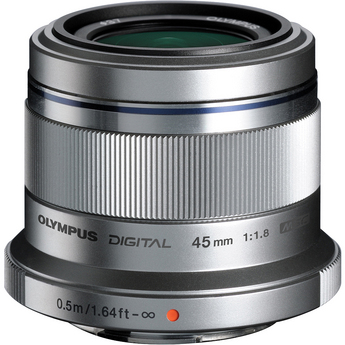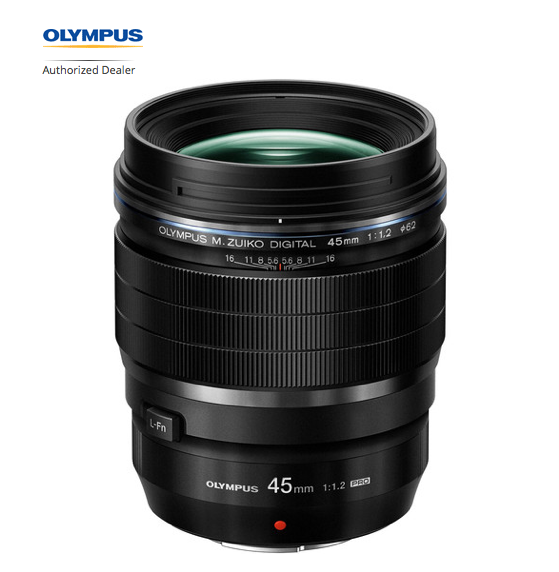NEW MICRO 4/3 FAST GLASS! PRE-ORDER NOW!
Some awesome new Micro 4/3 Lenses are available for pre-order through B&H today..
The Olympus 12mm f2 which is basically a 24 f/2 is available HERE for $799 – THIS one seems to be the real gem…
also, the new 45 1.8 which comes out to be a 90mm is available for $399 as well, RIGHT HERE!






“The Olympus 12mm f2 which is basically a 24 f/2…”
Please, not this confusion again. If you are gonna calculate equivalent focal lengths, you better do the same with the aperture. So, it’s basically a 24/4.
12/2 = 6 mm aperture
24/4 = 6 mm aperture
See?
Yes, please, no more of this nonsense. The 12 f/2 will give you the light gathering capabilities of an 24mm f/2 – FACT. Not f/4. In other words, if you were using a Canon 5D and 24L at f2, you will have the same light gathering/low light capabilities and equivalent focal length as using the Olympus 12mm f/2 – it is an F/2 lens. If you are talking “Bokeh” or OOF areas then you will have the “bokeh’ of a 12 f/2. But I see fast lenses as low light tools and the Oly is an f/2, not an f/4 lens.
Steve, this is a serious misunderstanding. Using a 24/2 on FF means that you have four times the light gathering sensor area. Hence, you get two stops of advantage and that’s NOT equivalent to 12/2 on MFT.
Take it one step further; some point-and-shoot cameras have f/1.8 lenses. Are they “equivalent” to f/1.8 on FF? Not at all, of course. The entrance pupil and image circle are much smaller due to the very short focal length.
If you’re multiplying focal length, you must multiply everything else to make a fair comparsion. Everything else is useless. The MFT sensor must amplify the signal four times as much at the same ISO speed (if it has the same amount of pixels as the FF sensor), which is the reason for higher noise. You could as well crop the FF image to a fourth of the area and magnify it with the same result at the same aperture.
“It’s an F/2 lens” – Indeed, but “F” is not the same in both cases, so F/2 (a fraction) means different things. 12/2 is not the same number as 24/2.
Makten, you are right. 12/2 and 24/4 have the same absolute size of the aperture, which is 6mm.
The other big lens is the Panasonic/Leica 25mm (50 mm equivalent). Steve, once you finish the Seal tour, could you make a comparison between the Panasonic/Leica 25mm and the Voigtlander 25mm f0,95 for micro 4/3?
Oh yes, such a comparison will be sweeet 🙂
I have seen many hands-on reviews, but most people don’t understand what bokeh is. Steve, I trust you for a real world, insightful comparison as always!
Spots of lights in the background and blurred foliage against the sky are a must 😉
Oh and by the way, throwing the Panasonic 20/1.7 in the mix could be nice, too, for the sake of comparison: which way to go between size, ease of focusing, brightness, sharpness, bokeh? And thanks so much for your website 🙂
http://www.youtube.com/watch?v=qrCWYhDosxg
Wow! Thanks for the link!
In fact they compared it to some specific low range SLR’s and theirs was faster. I just don’t remember exactly which cameras they used for the comparison. Anyway, it seems impossible to me to be faster than a ID mark IV from Canon, for example.
They cannot claim the World’s fastest AF based only on “some specific low range SLR’s”; that would be ridiculous and looking for trouble. But they definitely need a point of comparison because it’s impossible to test every possible combinations.
I’ve read somewhere that they compare to all other AF cameras with their respective kit lens. If this is correct, it seems fair and reasonable to me since this is generally the lens that people are using the most. Well… not me, and maybe not readers here, but generally yes: I see all the time people with middle- and even high-range DSLR’s mounted with crap kit lenses!
What I’m wondering is whether they still use distortion correction on these lenses.
Wow, the M4/3 system is maturing before our very eyes. These look to be the M4/3 equivalents of Leica L primes, Pentax FA primes,etc…in their ambition and pricing…The 2 lenses would make a lovely pair….now only if a pro body could come along with faster AF…..
Pro body? E-P3 with the bigger grip + VF2 isn’t enough? Faster AF? I think we can stick to the Fast-AF for a couple of years…
anyway, the 12 and 45mm are really beautiful. Get the Pana 1.4/25 and the trio could be epic on any m43 camera.
Leica L primes? Do you mean Canon L? Or Leica M? Anyway, it’s good to see the trend goes to high-quality primes on both sides – the new Leica-branded 25 Summilux, and the two new Zuiko lenses all look very promising!
LOL…I guess I see where my mind is…Canon L is what I intended….yeah, the Leica branded lux should be lovely as well…
I think Olympus are saying their new M4/3 cameras have the fastest AF.
They may have the fastest M4/3 AF, but judging from the performance seen in my Pen E-PL2 vs. my Nikon D5100 I’d say DSLRs are still waaaaaaaay ahead when it comes to AF speed.
Although I’ll admit that the Pen is a really nice toy.
They are claiming the E-P3 is the world’s fastest AF!
Found their press release. I see they actually do claim the world’s fastest AF. Can’t wait to see it.
That must be the fastest AF in the 4/3’rds world 🙂
Not sure I consider the PENS a toy. I am using them for PJ when possible.
There are a few demo videos on youtube of the AF speed, it is indeed very fast. Far faster than a Nikon D5100. Heck, even looks like it locks onto subjects faster semi-pro DSLR’s. Olympus has made no claims about the continues AF speed, so I suspect DSLR’s will still be better at that, but that’s of no concern of mine as a street/portrait/landscape guy. I can’t count on one hand number of times I’ve used continues AF.
I really do think we seeing the beginning of the end of the DSLR era. With the IQ 4/3’s sensors are now producing combined with the smaller size and now super fast AF I really can’t make much of a case for most casual shooters to choose a DSLR…well, unless you just like large cameras for some reason.
Some consumers are still going to want the “super zooms” like the Nikkor 18-200mm or 28-300mm for their D300s or D700. Many consumers will prefer a single lens over carrying even two lenses for their use even if the super zooms are slow lenses in comparision and probably will not reach the same level of IQ as a prime. For many, the IQ they will get with the super zoom will be sufficient.
Your all consumers! LOL!!!!
Ashwin:
Do you think the Olympus OM-D would be a suitable replacement for the Canon 7D or would it serve better as a complement to it (grab&go camera)? I’m contemplating a trade-in but need a perspective. Thanks
Well, it will focus faster/just as fast – will be smaller, will have a great lens selection, but the overall quality may not be up there with the 7D due to the sensor size. Me? Id take a OM-D over a 7D any day but I am a fan of smaller cameras that pump out high quality and give a great user experience. On paper the OM-D appears to be the best M4/3 yet. Oly seems to just “get it”.